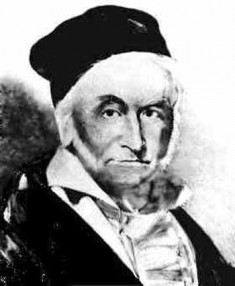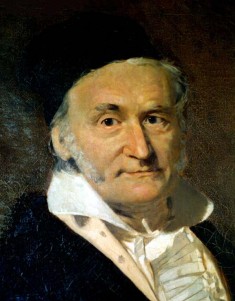Born on April 30, 1777, in Brunswick, (then part of the Holy Roman Empire, now in Lower Saxony, Germany), Johann Carl Friedrich Gauss became one of the most prominent mathematicians since the classic Greek mathematicians.
Gauss wrote pivotal works in diverse scientific fields such as differential geometry, algebra, analysis, modular arithmetic, statistics, geophysics, geodesy, optics, planetary astronomy, electromagnetism and number theory, to which he remained devoted until his death.
Early Life
Widely known as the “prince of mathematicians,” Gauss was the only child and the child prodigy of a poor yet close-knit German working-class family. He pioneered the proof of the fundamental theorem of algebra, which consists of the fact that every polynomial equation with complex coefficients has as many roots as its degree.
Gauss’s early and intellect was recognized by his poor yet devoted parents. In 1784, while attending elementary school, young Carl took his teacher, Herr Buttner, by surprise when he instantly and effortlessly summed up the integers from 1 to 100 and wrote down the correct answer on his slate.
Higher Educational Years
Gauss’s exceptional intellectual abilities caught the eye of the Duke of Brunswick in 1791, who financially supported the ambitious student to help him achieve a higher academic education. In 1792, the Gauss enrolled at the Collegium Carolinum (present-day Braunschweig University of Technology, the oldest in Germany) in his native town of Brunswick, and in 1795 at the Georg-August University of Gottingen.
When he was only 19, he made a breakthrough discovery in mathematics when he proved that any polygon whose number of sides is a Fermat prime can be constructed using a straightedge and a compass. His proof was the first progress in polygon construction in more than 2000 years. This groundbreaking discovery made while he was still a student, the construction of a regular heptadecagon (a 17-sided polygon), encouraged him to choose a career in mathematics.
That same year (1796), Gauss became the first mathematician in the world to provide the proof for the law of quadratic reciprocity in number theory and he called it the “fundamental /golden theorem.” He also came up with the prime number theorem in 1796, although he never published it.
Greatest Contributions to Mathematics
In 1801, when he was only 24, Carl Gauss published the monumental work entitled Disquisitiones Arithmeticae, which laid the foundation for the systemized study of number theory as a distinct discipline. His famous discovery while studying at Gottingen was the topic of Section VII of his book in which he also introduced the symbol for congruence in geometry.
 His 1799 doctoral dissertation represented a discussion on the first proof of the fundamental theorem of algebra, which states that every polynomial equation with complex coefficients has at least one complex root. Gauss also contributed to the discovery of the number of solutions for polynomial equations with coefficients in finite fields, which represented the basis for the Weil conjectures (1949).
His 1799 doctoral dissertation represented a discussion on the first proof of the fundamental theorem of algebra, which states that every polynomial equation with complex coefficients has at least one complex root. Gauss also contributed to the discovery of the number of solutions for polynomial equations with coefficients in finite fields, which represented the basis for the Weil conjectures (1949).
In differential geometry, he introduced the term Gaussian curvature, an intrinsic measure of curvature, which led to the foundational result known as Gauss’s Theorema Egregium. His seminal works in mathematics influenced other famous mathematicians, including Sophie Germain, Friedrich Bessel, Ferdinand Minding and Bernhard Riemann.
Throughout his life, Gauss made other significant mathematical discoveries which he laid down in his diary, but failed to publish them. These include the method of least squares fitting, the Cauchy integral theorem for analytic functions, and the non-Euclidean geometry.
Death and Legacy
The famed mathematician was a hard-working perfectionist with an ardent passion for the “queen of sciences,” as he referred to mathematics. His magnus opus was Disquisitiones Arithmeticae, which was published in 1801 and it covers both elementary and algebraic number theories.
Carl Friedrich Gauss passed away in his sleep at the age of 77, on February 23, 1855 in Gottingen, Kingdom of Hanover (now Germany) and he was buried in the Albanifriedhof Cemetery. His genius was medically explained after Rudolf Wagner studied his preserved brain and found highly-developed convolutions. He was survived by five of his six children – three with his first wife Johanna, who died in childbirth, and three with his second wife, Minna, Johanna’s best friend.
